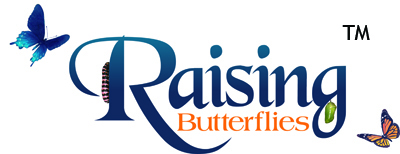Post Hibernation Strategies > Isolation from Sibling Caterpillars
Checkerspot butterfly caterpillars conforming to the genera Euphydryas, Chlosyne, Poladryas, and Thessalia
overwinter as half-grown larvae and are gregarious before diapausing. (They
usually disperse in nature to nearby plants before diapausing to insure that
they will obtain sufficient isolation when resuming feeding the next spring.)
However, after these larvae overwinter and break diapause in the spring, these same larvae will feed for an instar and then re-diapause if placed either in too close of proximity to sibling caterpillars, on too little of host plant, or some combination of two.
In nature, rediapausing checkerspot larvae usually is not a problem for some California populations of Euphydryas chalcedona where the larvae feed on hearty bushes. However, there are other checkerspots that feed on smaller plants, such as Penstemon and Castilleja spp. These plants generally can only support a limited number of post-diapause larvae. Therefore, in nature, if too many post-diapause larvae are feeding on the same limited plant at the same time, some larvae will re-diapause to insure survival.
Therefore, in the lab, it makes sense both to separate post-diapause checkerspot larvae and provide plenty of host plant in order to coax them to NOT rediapause; producing adult butterflies sooner rather than later. Using the twin cup method of rearing for one checkerspot larva, is one way of addressing this problem. To see a video demonstrating the twin cup method for Thessalia leanira wrighti, click here. (Also, see slide show below.)
However, after these larvae overwinter and break diapause in the spring, these same larvae will feed for an instar and then re-diapause if placed either in too close of proximity to sibling caterpillars, on too little of host plant, or some combination of two.
In nature, rediapausing checkerspot larvae usually is not a problem for some California populations of Euphydryas chalcedona where the larvae feed on hearty bushes. However, there are other checkerspots that feed on smaller plants, such as Penstemon and Castilleja spp. These plants generally can only support a limited number of post-diapause larvae. Therefore, in nature, if too many post-diapause larvae are feeding on the same limited plant at the same time, some larvae will re-diapause to insure survival.
Therefore, in the lab, it makes sense both to separate post-diapause checkerspot larvae and provide plenty of host plant in order to coax them to NOT rediapause; producing adult butterflies sooner rather than later. Using the twin cup method of rearing for one checkerspot larva, is one way of addressing this problem. To see a video demonstrating the twin cup method for Thessalia leanira wrighti, click here. (Also, see slide show below.)


